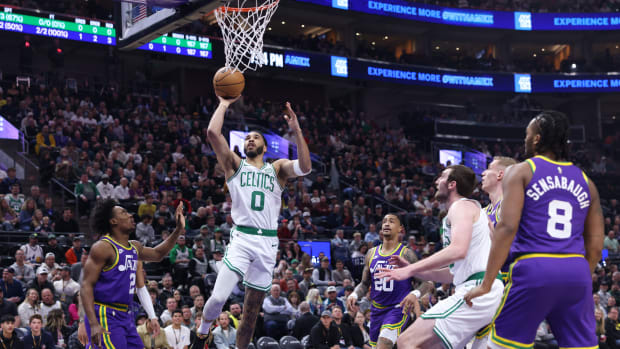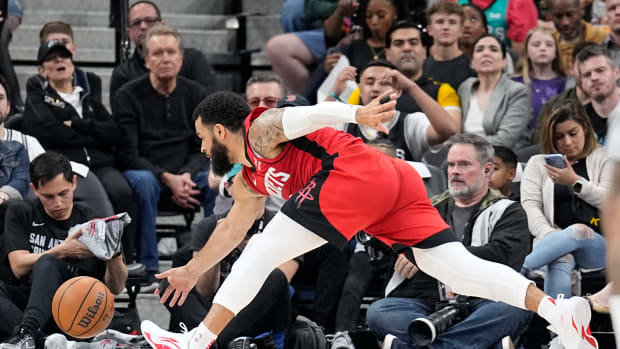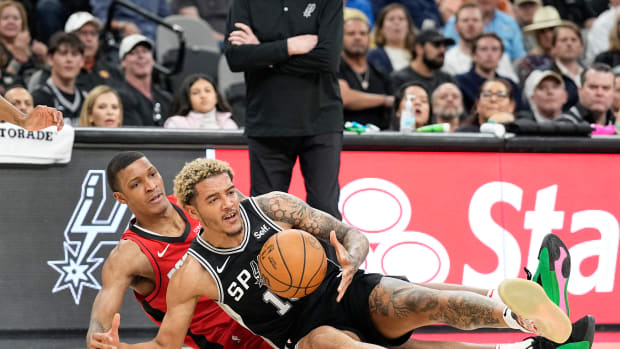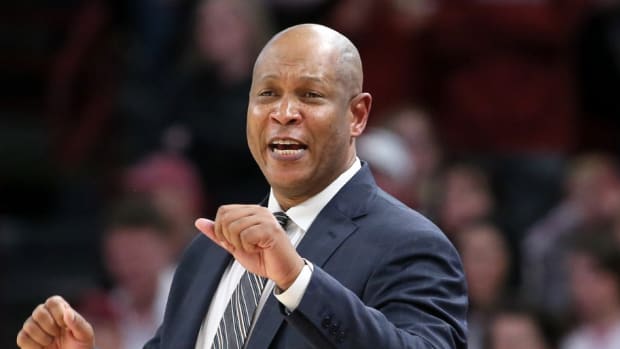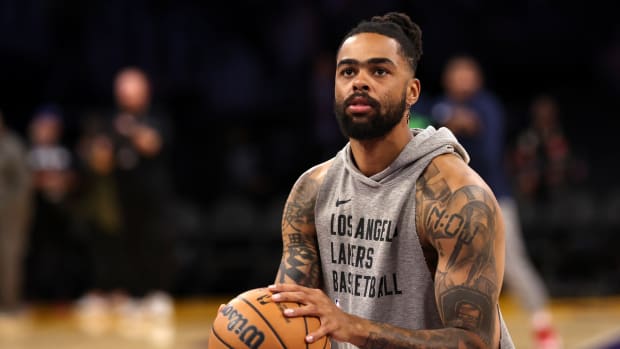Kawhi Leonard and Serge Ibaka Partnership is Paying Off for Clippers
A couple of years ago, I was on the phone with a front office executive who works for a perennial playoff team. It was about a week before the trade deadline as our conversation bounced around a few targets they may want to acquire. I made a few suggestions that, in theory, could help correct an imperfection or two. He politely dismissed each one with the same rhetorical response: “How does he complement our best player?” A beat. “Exactly.”
That interaction clarifies and complicates the team-building process. All pieces should fit, sure, but whenever a new one joins a contender, the degree to which he directly accentuates the star(s) can be more important than how any particular strength fills a roster hole or erases a flaw.
Sometimes, though, those two are one in the same, as is the case with Kawhi Leonard’s Los Angeles Clippers, for whom it’s hard to think of a more ideal supporting castmate than Serge Ibaka, a center man whose range, rim protection, familiarity, and subtle selflessness have been a godsend.
The Clippers are an offensive fireball with Kawhi whether Ibaka plays or not, but so far Leonard’s own effective field goal percentage is 10 points lower when anyone else mans the five. And when compared to how L.A. performed last year in lineups that instead featured Montrezl Harrell—which were tremendous on both ends— things have somehow improved, with the Clippers’ offensive rating rising all the way to an absurd 125.0 points per 100 possessions in non-garbage-time minutes.
These two complement each other in numerous ways, but their synergy as pick-and-roll collaborators is starting to stand out. Independently, Leonard has long established himself as a hyper-efficient operator. But after a dip last season, where he generated 0.97 points per possession and finished a career-high 32.8% of his plays as a pick-and-roll ball-handler, Leonard’s frequency is down to 22.7% while his output is up to a stunning 1.27 points per possession.
In other words, when it comes to demolishing a defense, few options in the entire sport are superior to Leonard with a ball screen. His increasingly tight handle, vision and constant threat to either pull up or drive to the rim (where he’s shooting an absurd 79 %) makes him lethal regardless of how the defense wants to play it. There are no good options.
When Ibaka sets the pick, the situation becomes especially terrifying, whether he pops or rolls. With the former, Los Angeles tends to either get a wide-open shot from a center who’s shooting a career-best 41% from behind the three-point line ...
... or force a late switch that lets Kawhi pick on a defender who’s probably slower than he is. Jusuf Nurkić’s defense isn’t even that bad on the play seen below, but even with the shot clock ticking down he knows he doesn’t have the foot speed—or backline help—to play up quite as far as he’d like.
When Ibaka rolls, it forces more challenging decisions from the defense. He doesn’t suck help defenders into the paint like Anthony Davis or Rudy Gobert, but he still stands as a large target with a reliable post game and an assist rate that has cracked double digits for the very first time. The trust he and Leonard built in Toronto helps the ball pop whenever Ibaka’s man stays high to take away Leonard’s airspace. From there, the defense can find itself in the type of rotation they’d prefer to avoid, where Ibaka knows they want to stop him in the paint even before he corrals the ball. The result here is an open corner three.
This duo doesn’t need to be organized in the middle of the floor to be effective, either. Here’s an example against a Bulls team that’s forced to react on the fly when Leonard and Ibaka snap into a quick two-man game as the shot clock winds down. This is where they’re at their best, functioning as connective tissue that can incorporate the weak side in the blink of an eye.
Chicago’s thought process was fine but its execution wasn’t perfect, which is often the threshold to stop an offense this lethal. (There’s a reason only a dozen players have a higher offensive rating than Ibaka right now.) While guarding Paul George, Zach LaVine stunts toward the nail to cut off Kawhi’s drive middle. It’s a cat-and-mouse game within a game, and LaVine wins ... until he doesn’t. George catches the pass then immediately blows by LaVine’s wild closeout. The Bulls do a pretty good job scrambling from there, but Ibaka eventually tips in Leonard’s miss. (Luke Kennard, who's made 43.4% of his non-corner threes this year, was also wide open and one pass away.)
The amount of resources inside any No. 2 offense—especially one currently more efficient than every other roster ever assembled—is vast. They utilize both sides of the floor and always have shooters who can expand the square footage on which they’re able to operate. The Clippers are methodical in the half-court, where they’re most comfortable and average more points per play than every team except the Nets. Their elbow actions, iso chances, and choreographed off-ball screens are designed to throw even the most disciplined opponents off balance.
At the core of their success is Leonard, whose very best self often emerges when collaborating with Ibaka. It’s a role player-superstar dynamic that works on several levels, never more than when they’re engaged in the game’s most basic play. It all goes back to that simple question from the top: Yes, Ibaka complements Leonard, in ways few bigs can. At the end of the day, that’s a win for everybody involved. Happy Kawhi equals happy Clippers.






























